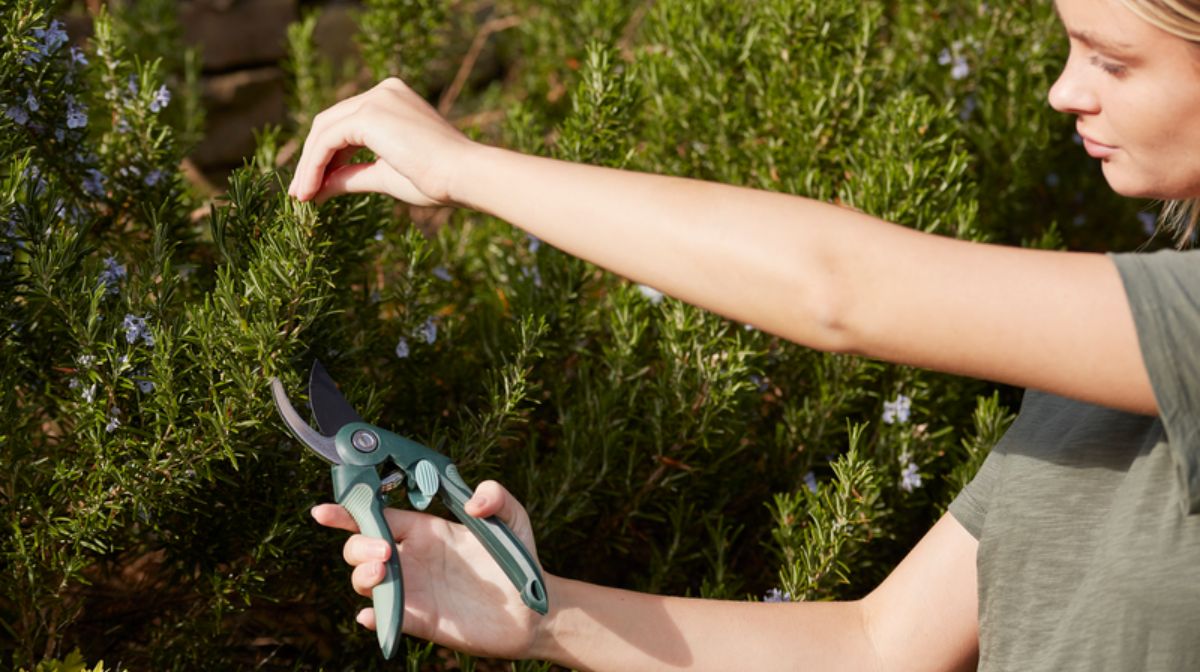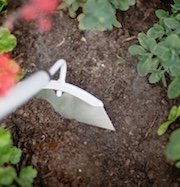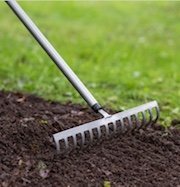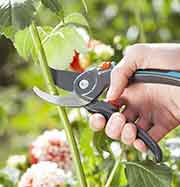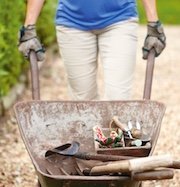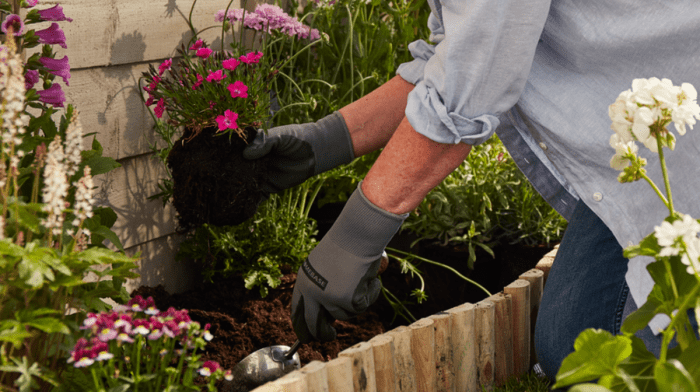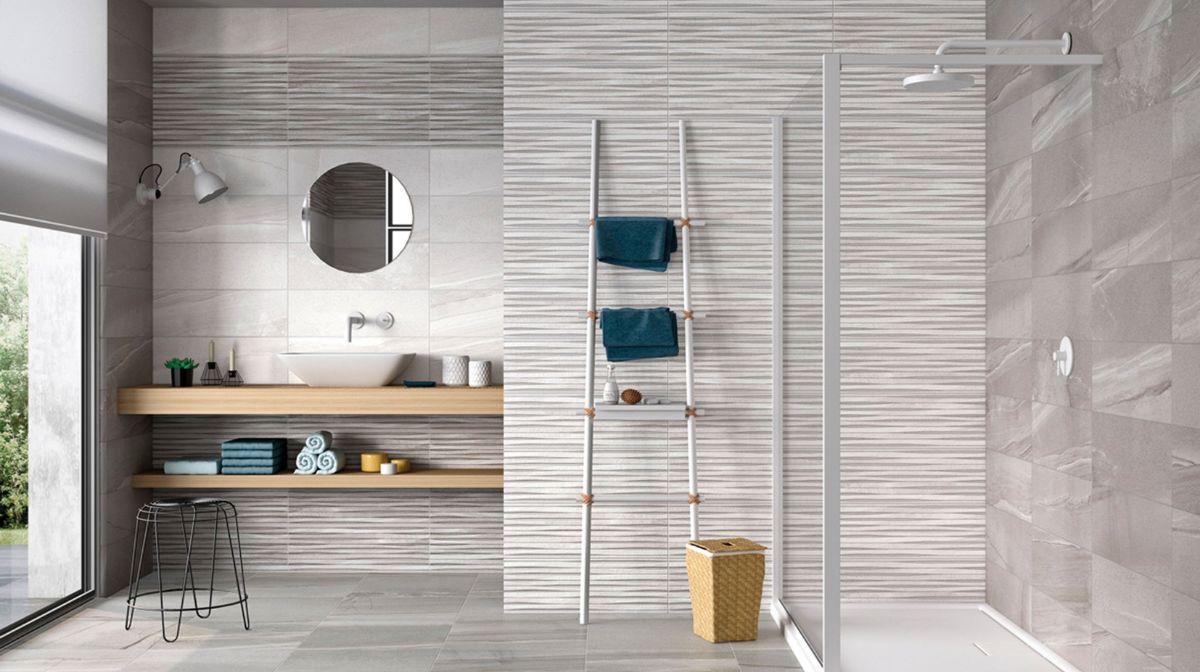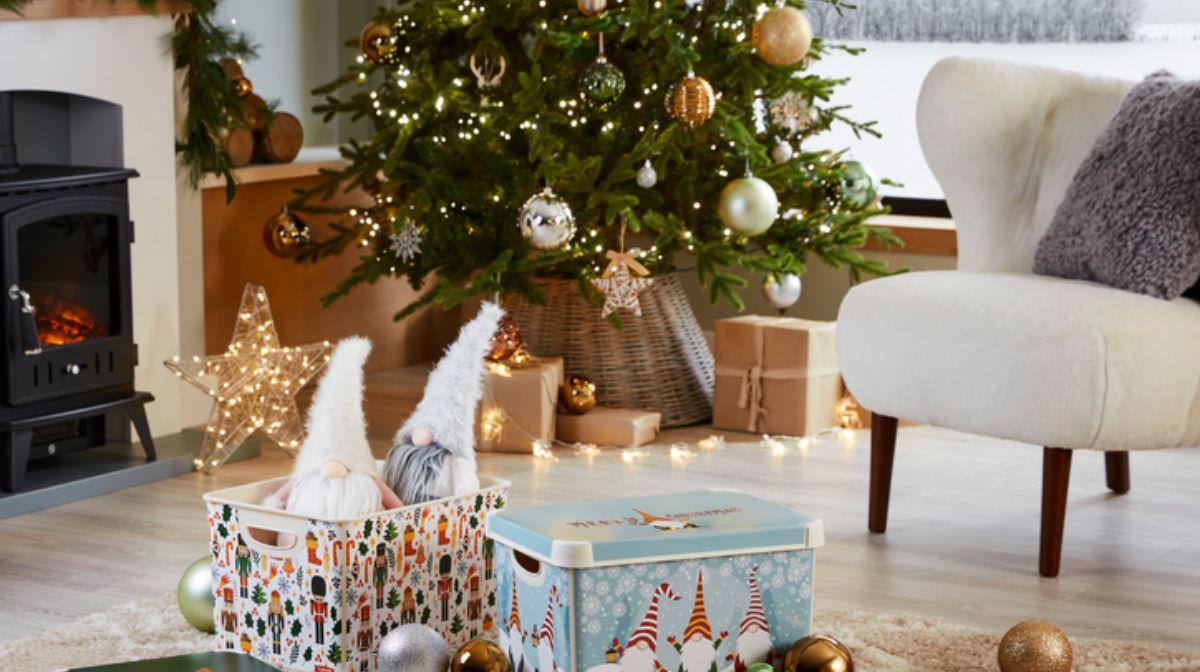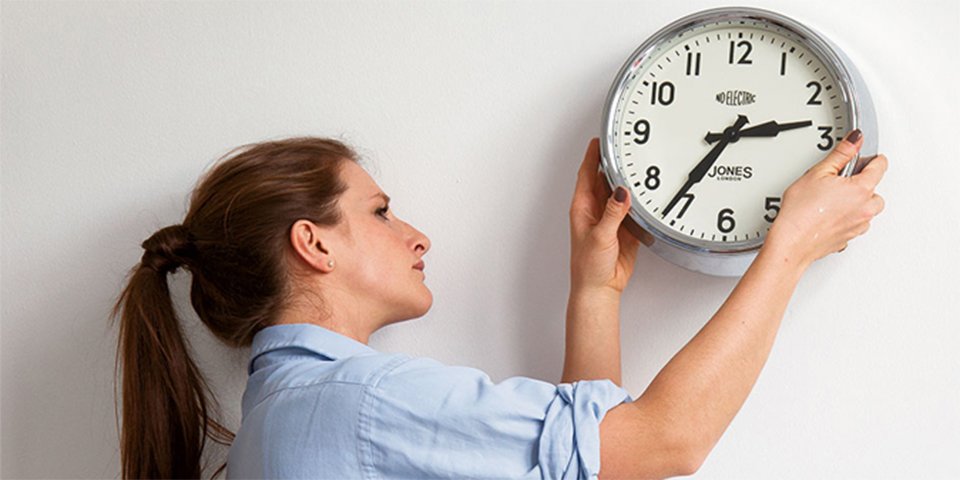Whether you’re a green-fingered expert or just like to potter round the garden at the weekend, having the right garden tools will make all your pruning, cutting, digging and planting jobs a lot easier to handle. At Homebase, there’s a great range of hand tools for the garden – just follow this guide and you’ll soon have the right equipment to get the job done.
Types of garden hand tools
Spades & forks
Digging tools are essential for working in the garden so if you’re only going to invest in one tool, make it a spade or a fork. Here are some tips to help you choose the tool that’s right for you:
- Generally, spades and forks come with either 28 or 32-inch shafts.
- There’s a variety of handle styles to choose from, with D-shaped, T-shaped and wishbone handles.
- The size and style of handle you choose will depend on your height. It’s a good idea to visit a Homebase store to see which you find most comfortable.
- The spades and forks from Homebase are made from plastic, wood or metal. The range lets you buy what you need depending on how intensive and heavy your garden work is. If it’s lightweight, choose a plastic variation, or if you need something with a higher durability, a metal handle is best.
- Although a high-quality spade or fork will help with most of your garden digging work, you may want to invest in some smaller handheld tools for delicate borders. Trowels are easy to use and ideal for working in vegetable patches, pots and tubs.
Hoes
Hoes are used to loosen and sift the earth and are ideal for weeding large areas of soil. They come in a variety of sizes and can be made from plastic, wood or metal. If you’re dealing with heavy-duty work, a sturdy metal hoe would be best but these will be much more expensive than lighter plastic versions.
There are two main types of hoe blade to choose from, both designed for slightly different functions:
- A pull hoe has a blade set at an approximate right angle to the handle. Pull hoes are used by making a downward chopping action into the soil and then pulling the hoe back towards you.
- Push hoes have a blade that angles gently away from the handle, much like a spade. To use this type of hoe, simply push the handle to move the blade forward, forcing it below the topsoil.
| Function | Pull Hoe | Push Hoe |
| Cultivating soil | ✔ | ✔ |
| Loosening weeds | ✔ | ✔ |
| Removing deeply rooted weeds | x | ✔ |
| Edging | x | ✔ |
| Sowing seeds | ✔ | x |
Rakes
A good rake is an invaluable tool for numerous gardening jobs and they vary in head size to suit different tasks. Generally, most rakes have long handles so you can work comfortably. However, shorter hand-held rakes can be perfect for more intricate work in flower beds.
Typically, wider rake heads have more teeth and are made from plastic or pliable materials, while narrow heads usually have short, rigid metal teeth. This makes rakes with wide heads great for lawns and pavements, and narrow head rakes better for working with soil.
| Function | Wide Head Rakes | Narrow Head Rakes |
| Removing leaves | ✔ | x |
| Removing stones | ✔ | x |
| Levelling soil | x | ✔ |
| Breaking up stubborn soil | x | ✔ |
| Removin debris from lawns | ✔ | x |
| Aerating lawns | x | ✔ |
Planting & weeding tools
There are a number of different planting tools available, useful when planting seeds, bulbs and saplings. Each is made from different materials and priced suitably for a range of budgets. Here are the essential tools you need and their functions.
| Type of tool | What it’s used for |
| Trowel | Potting and transferring mature plants. Functional and suitable for general garden work, such as weeding and mixing additives into your soil. |
| Transplanting trowel | Transferring young plants. The narrower heads will help move delicate plants. Some variations have marked depth gauges to help you plant to the right level. |
| Hand hoe | Aerating soil. This multi-functional tool with both push and pull hoe blades can be used for loosening soil and weeding in your flowerbeds. |
| Weeders | Weeding. Strong enough to pull up deeply-rooted weeds from your flower bed. |
| Hand fork | Removing weeds from shallow roots. This small, handheld tool usually has either 2 or 3 metal prongs. These can also be used for light cultivation. |
| Cultivator | Breaking up soil. Their compact, 3-pronged design means you can also use them to remove weeds from more densely planted spots. |
| Dibbers | Planting seedlings. Use these wooden sticks to make your life easier when making holes for sowing seeds. |
| Bulb planters | Planting and preparing bulbs. Available as a handheld tool or with a long handle with a T-grip. Bulb planters can also be used for transferring and repotting small plants. |
Pruning & cutting tools
Pruning and cutting tools are really useful for keeping your garden trim and tidy.
- Most pruning and cutting tools can be used on everything from bushes and shrubs to hedges and trees.
- Secateurs are available in two designs (anvil and bypass) and are perfect for pruning and cutting stems and branches up to 1cm in diameter.
- Loppers are similar to secateurs, but with extended handles for extra leverage, so they can be used to cut branches up to 3cm in diameter. If you need a bit more height, look for loppers with telescopic handles.
- If you are looking for a tool suitable for hedges and large bushes, some sharp shears will help to keep the foliage in check.
- For larger branches and trees, you might need a pruning saw or bow saw.
Things to consider before buying garden hand tools
Before investing in any new garden tools, it’s a good idea to think about the size and makeup of your outside space, and your garden’s desired look. If you have a large garden with a wide variety of trees, shrubs, flowers and vegetables, you’ll need a wider variety of tools to keep your garden looking its best. If you’re planning to focus on a vegetable patch or borders full of flowering plants, then investing in specialist planting and cultivating tools will make your jobs a lot easier.
Looking after your tools
Looking after your planting, weeding, pruning and cutting tools properly is important. It’ll ensure you use the tools properly and help extend their lifespan. These tips will help you look after all of your garden tools:
Top tips for your garden tools
- Think about where you’re going to store your tools. Even the toughest tools will begin to rust and warp after a while if left out in the elements, so make sure you’ve got somewhere safe and dry to keep them, such as a shed.
- Take the time to clean any dirt or soil off your tools at the end of a hard day’s gardening. This will prevent rust from setting in and helps keep your storage area clean.
- Treat tools with mechanisms (such as secateurs) with WD40 before you put them away. This will keep them in the best condition for even longer.
- Sharpen bladed tools regularly before they become too blunt and be sure to replace blades when they crack or break.
- Look for tool heads made of stainless steel or supplied with a PTFE coating, as both of these are rust-resistant. PTFE allows the tool to make a smoother cut, and helps extend its life by protecting the head from wear and tear.

